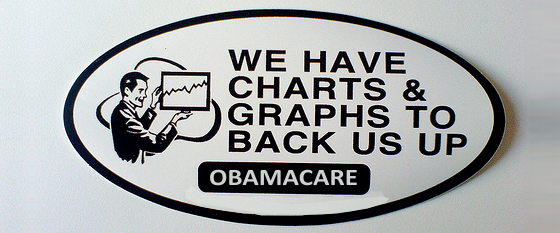
In “Why Are Canadian Drugs Cheapter?” we wrote:
This company invests $52 in research and gets four aces. To be profitable, they must make a total of $15 per ace to produce a 15% return on investment, $60 total or $8 in profits.
Once an ace is ready for production, manufacturing each ace costs a penny. The company expects to sell 150 of each ace in the United States. As a result, if they charge 11 cents, the dime of profit will result in the $15 they need as return on their investment. After covering the cost of development, they will receive a marginal $2 profit for each ace.
Our company’s 15% profit margin is reasonable, but the statistics can be wildly manipulated.
Consider these possible distortions: The company has a gross profit of $15 on an ace that only costs $1 to develop; that’s a 1500% return. Or each ace only costs a penny to manufacture; the company is gouging a 1000% markup when they charge an extra dime.
Statistics like these are often used to portray pharmaceutical companies as choosing greed over helping advance medicine. In reality, most drugs researched are duds that never move out of development. The drugs that are ultimately successful must carry enough profit to support the losers or the pharmaceutical company will go out of business.
In our example we used the example of a deck of cards and simplified the numbers. Here are some examples of articles which mislead with statistics.
Big Pharma Pockets $711 Billion in Profits by Price-Gouging Taxpayers and Seniors
In this article they total the net profits for the top 11 Global Pharmaceutical Companies through an entire decade from 2003 through 2012.
First bear in mind that the largest pharmaceutical companies became the largest pharmaceutical companies because they developed ace drugs. Any statistic which does not include the pack of companies which went bankrupt because they spent all their money on research and development and then failed to find an Ace is a misleading statistic. This statistical error is called “discounting the graveyard.”
The top company they list is Johnson & Johnson (JNJ). The current market value of Johnson & Johnson is 289.76 billion. Their recent annual total revenue was 71.312 billion (24.6%). And their net income was 13.831 billion (4.8%).
Just to be clear, that means for every $100 I invest in JNJ I will get about $4.77 each year. JNJ is a nice stock, but it seems to be price-gouging much less than most of the tech companies.
In the article they write:
In the article, the groups of oncologists ask, “What determines a morally justifiable price for a cancer drug? A reasonable drug price should maintain healthy pharmaceutical industry profits without being viewed as ‘profiteering’.”
What is interesting is that they never answer what ROI constitutes “reasonable profits.” Drug company profits are much smaller than other industries, and yet their prices are still called “pricey.”
Then they go on to quote prices in the United States as compared to other countries for various drugs. I don’t know where they are shopping that they are paying $100 for a prescription of Lipitor and $187 for Nexium. I found them available at Kroger Pharmacy, Kmart, Walmart and CVS for a tiny fraction of those costs.
It is difficult to reason with people who lie and mislead in their statistics because they believe that they have the moral high ground. It is also difficult to reason with those who believe that they are morally justified in forcing people to sell at the price they demand and use the threat of force and imprisonment. In civilized circles they are called thugs.
Finally, has this group of oncologists asked what determines a morally justifiable price for their cancer treatments and services, which are many multiples of the price of the drugs prescribed?
Do Drug Companies Make Drugs, or Money?
In this article the author criticizes Mike Pearson, chief executive of Valeant Pharmaceuticals International this way:
To the extent Mr. Pearson has succeeded over the years, he has done so largely by sharply cutting research and development budgets, arbitraging tax domiciles — Valeant left the United States for Canada’s lower tax rates in 2010 by merging with Biovail — and buying rivals so he can cut their costs, too, while they take advantage of his lower tax rate.
First, there is nothing wrong with some companies specializing in research and development and then selling out to other companies that specialize in production and reducing manufacturing costs.
And second, the United States currently has the highest corporate tax rate in the world. And when a United States corporation makes 5% ROI, first the corporation is potentially subject to a 39.5% tax and then the shareholders are subject to an additional 39.5% tax. This means that for every $100 in earnings, the corporation might pay $39.50 federal tax and only distribute $60.50 to the shareholder. Then the shareholder might pay $29.95 federal tax and only get $30.55 of the original $100 in earnings. And of course none of this counts the state income taxes which can be as high as California’s 12.30%.
Perhaps instead of the U.S. government gouging American corporations for taxes and driving them overseas we should reduce the burden of the federal government on the American people so they can afford to pay for their healthcare.
This blog post is part of “The Economics Of Healthcare series“.